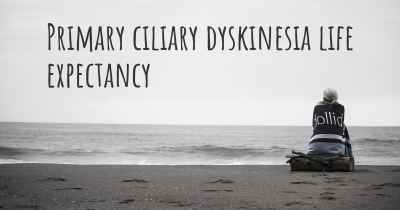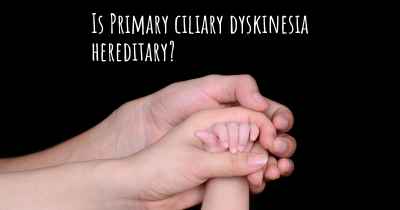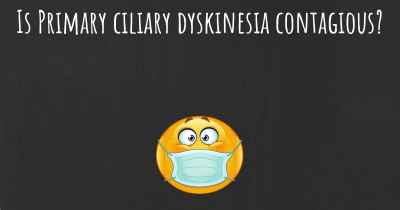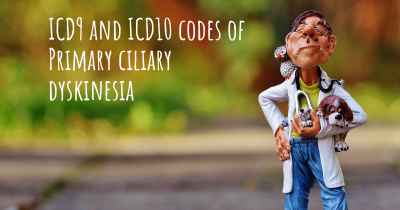Living with Primary ciliary dyskinesia. How to live with Primary ciliary dyskinesia?
Can you be happy living with Primary ciliary dyskinesia? What do you have to do to be happy with Primary ciliary dyskinesia? Living with Primary ciliary dyskinesia can be difficult, but you have to fight to try to be happy. Have a look at things that other people have done to be happy with Primary ciliary dyskinesia

Living with Primary Ciliary Dyskinesia (PCD)
Primary Ciliary Dyskinesia (PCD) is a rare genetic disorder that affects the function of cilia, which are tiny hair-like structures found in the respiratory tract, reproductive system, and other parts of the body. These cilia play a crucial role in clearing mucus and debris from the airways, helping to prevent infections. Living with PCD can present various challenges, but with proper management and support, individuals with PCD can lead fulfilling lives.
Medical Management
Effective medical management is essential for individuals with PCD. It is crucial to work closely with a knowledgeable healthcare team, including pulmonologists, otolaryngologists, and other specialists who are experienced in treating PCD. Regular check-ups and monitoring are necessary to assess lung function, identify potential complications, and adjust treatment plans accordingly.
Treatment options for PCD may include:
- Chest physiotherapy: Regular airway clearance techniques, such as postural drainage, percussion, and vibration, can help mobilize mucus and improve lung function.
- Inhaled medications: Bronchodilators and mucolytics may be prescribed to help open airways and thin mucus, making it easier to clear.
- Antibiotics: Frequent respiratory infections are common in PCD, so antibiotics may be necessary to treat and prevent infections.
- Nasal saline rinses: Regular nasal rinses can help clear mucus and reduce nasal congestion.
- Hearing aids and ENT interventions: PCD can also affect the ears and sinuses, so hearing aids or surgical interventions may be required to manage related complications.
Respiratory Care
Individuals with PCD should prioritize their respiratory health and take proactive steps to maintain optimal lung function. This includes:
- Staying active: Regular physical activity, as tolerated, can help improve lung capacity and overall fitness.
- Avoiding smoke and pollutants: Exposure to smoke, chemicals, and other pollutants can exacerbate respiratory symptoms, so it is important to avoid them whenever possible.
- Practicing good hygiene: Frequent handwashing and avoiding close contact with individuals who have respiratory infections can help reduce the risk of contracting illnesses.
- Managing allergies: Allergies can worsen respiratory symptoms, so identifying and managing allergens through avoidance or appropriate medications is crucial.
- Ensuring adequate hydration: Staying well-hydrated can help thin mucus, making it easier to clear from the airways.
Emotional Support
Living with a chronic condition like PCD can be emotionally challenging. It is important to seek emotional support from loved ones, support groups, or mental health professionals who can provide guidance and understanding. Connecting with others who have PCD can offer a sense of community and shared experiences.
Educating Yourself and Others
Understanding PCD and its management is crucial for individuals with the condition and their families. Educate yourself about PCD, its symptoms, treatment options, and potential complications. This knowledge will empower you to make informed decisions about your healthcare and effectively communicate with your healthcare team. Additionally, educating others about PCD can help raise awareness and promote understanding within your community.
Planning for the Future
Living with PCD requires long-term planning and preparation. It is important to have a comprehensive plan in place for emergencies, including contact information for healthcare providers, a list of medications, and instructions for airway clearance techniques. Regularly reviewing and updating this plan will ensure you are well-prepared for any unforeseen situations.
Remember, living with PCD may present challenges, but with proper medical management, respiratory care, emotional support, education, and planning, individuals with PCD can lead fulfilling lives.
Posted Mar 6, 2017 by pcdwhat 1100








